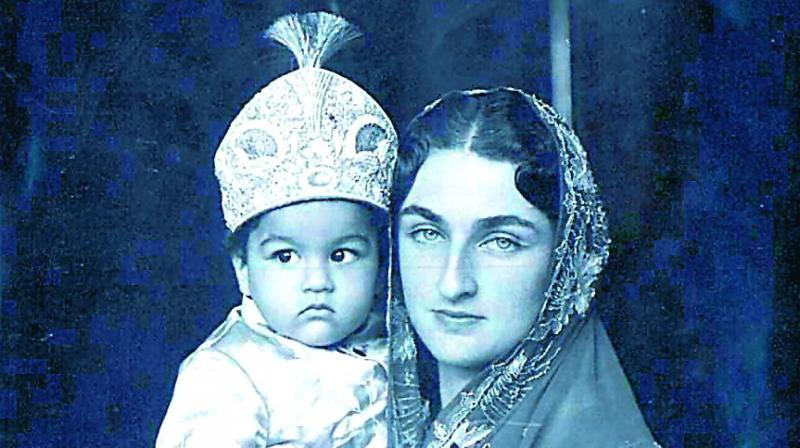Did Mahatma Gandhi meet Princess Niloufer on ship? Panel looks for clues
This brought about a social and cultural connect in the Hyderabad State.

Hyderabad: Did Mahatma Gandhi meet Princess Durrushehvar and Princess Niloufer on the ocean liner Pilsna at Port Said in Egypt when they were on their way to Hyderabad? This piece of history is being closely researched by historians studying relations between India and Turkey.
According to the British India archives in the UK, Mahatma Gandhi had boarded the ship after attending the Second Round Table Conference in London in 1931.
The last Nizam of Hyderabad Mir Osman Ali Khan’s elder son, Nawab Mir Himayat Ali Khan Azam Jah Bahadur, married Princess Durrushehvar, daughter of the last caliph of the Ottoman Empire, and the younger son, Nawab Mir Shujat Ali Khan Moazzam Jah Bahadur, married Princess Niloufer.
After the solemnisation of the marriages the two princesses boarded the Pilsna on which Mahatma Gandhi was travelling back to India, and it is reported that he requested a meeting with the princesses.
Salma Ahmed Farooqui, professor of history at Maulana Azad National Urdu University, who is on the research team, said, “This has come to light in the study of Ottoman-Asafia relations. Whether the meeting took place is not clear. But a request by Mahatmaji to meet the princesses has been noted. The period when the marriages took place was the end of the Ottoman Empire and the marriages had a wide-ranging geo-political implication.”
The period from 1931 onwards saw Hyderabad as the intellectual centre for Muslims and it was also a centre for Muslim internationalism, where the focus was on reviving the Islamic caliphate which also found support from Mahatma Gandhi.
Shoukat Ali, a leading member of the Khilafat movement, personally brokered the marriage negotiations between the Nizam and the deposed caliph. Correspondence between Hyderabad, Nice, London and Ankara in the British India Office archives suggests that the marriage alliances heightened Turkish and British anxieties relating to the revival of the caliph's position, for there were other Ottoman princesses who were married into various Muslim princely households in India and Egypt.
The established relations between the Otto-man dynasty and the Asafias brought western ideas of freedom and liberty into South Asian Muslim culture. The princesses were strong-willed, intelligent and rebellious young women who broke the barrier of seclusion expected of upper class women and freely mingled with nobility and common people. They had a deep concern for women's empowerment and inclusion in the workforce. This brought about a social and cultural connect in the Hyderabad State.
The researchers are Basavan Betul, professor from St Mary's College of Maryland in USA, Salma Ahmed Farooqui, Mudiraj Krishnaswamy, Karen Leonard and Fraser Hastings.

